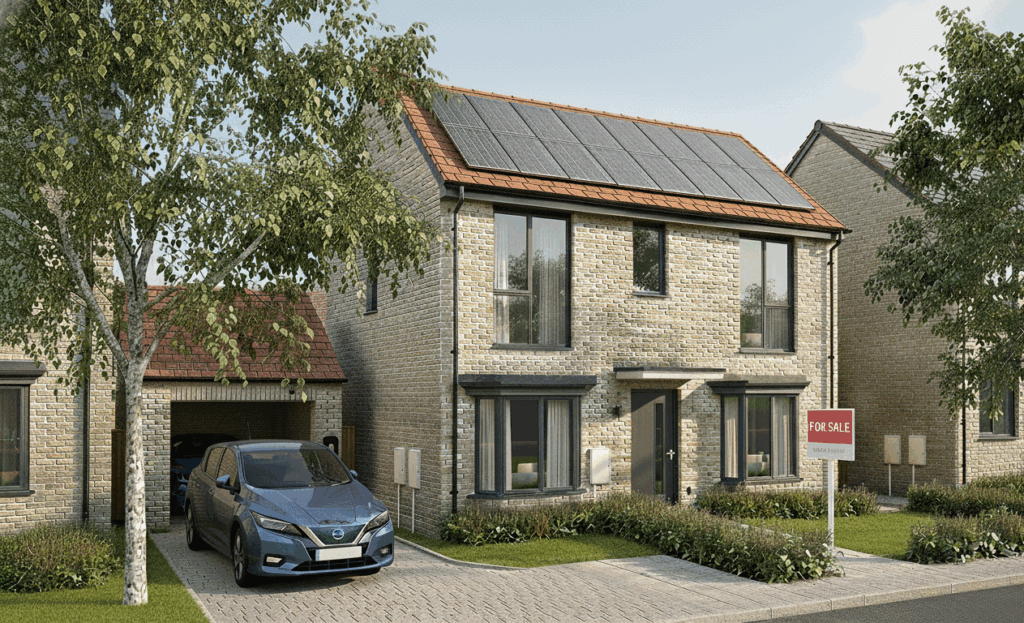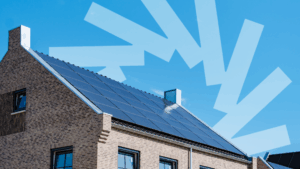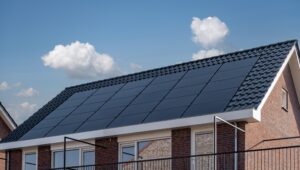Energy efficiency and renewable features are fast becoming must-haves in new homes. They cut bills, improve sustainability, and boost a property’s long-term value. But the presence of solar, batteries, heat pumps and high-grade insulation are increasingly marketed as “premium” features on new-builds to justify inflated property prices. This is commonly referred to as a “green premium”.
The cost of equipping new homes with renewables systems such as heat pumps and solar and battery systems ranges from £15,000 to £30,000. These costs are often added into the sale price, which reduces how much value the buyer actually gets from the lower energy bills.
This “green premium” doesn’t just limit access to energy independence for buyers; it also undermines developers’ competitiveness. And with the Future Homes Standard set to make many of these green features the new normal, charging extra will soon look outdated – leaving developers exposed if they don’t adapt.
Why the Green Premium Isn’t Working
While some research suggests that solar alone can increase a property’s sale price by 6.1%-7.1%, that uplift isn’t guaranteed in today’s affordability-strained market.
Homebuyers face a real predicament: they may not recoup the upfront outlay for these renewable features through cumulative bill savings or via a reliable uplift in the resale value of their property. For developers, the risks are clear. Homes priced higher because of renewable add-ons are likely to face slower sales cycles and take longer to shift – or in some cases, not sell at all.
In a market where affordability is key, it’s overall value – not inflated price tags – that drives sales.
A Market Under Pressure
Recent data paints a clear picture of how tough things are for developers. In London alone, only 3,950 new homes were sold in the first half of 2025 – just 9% of the government’s half-year delivery target – with private starts down 57% year-on-year.
Pushing for higher sale prices by spending more on the build is a high-risk strategy – particularly in a weak market – because those higher prices are not guaranteed. Developers are increasingly being left out of pocket, as many “green” add-ons now cost more to deliver than the uplift in sales price they generate. This adds weight to the case for alternative models that don’t depend on chasing a sale-price premium to make the numbers work.
Falling short of sales targets doesn’t just stall revenue – it threatens the viability of future developments. Until demand picks up, developers may hesitate to build, especially in areas where a green premium further deters price-sensitive buyers.
Changing the Mindset: From “Extra” to “Essential”
Breaking the green premium is about both fairness and smart strategy. Homes that include renewables as standard – without an added cost – are more attractive to buyers and sell more quickly. But traditional financing and ownership models make this inclusion challenging.
Solar leasing models such as Gryd’s require no upfront capital from developers and no price premium for buyers. It’s a straightforward route to integrate green infrastructure that delivers immediate energy savings and security for homebuyers, without forcing a compromise between renewables, build quality and a home’s price point.
They also help developers stand out in a crowded market, building trust through genuine value rather than upselling. And with the Future Homes Standard about to land, integrated renewables provide future readiness, protecting developments from compliance costs down the line.





